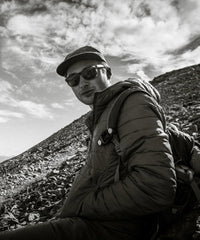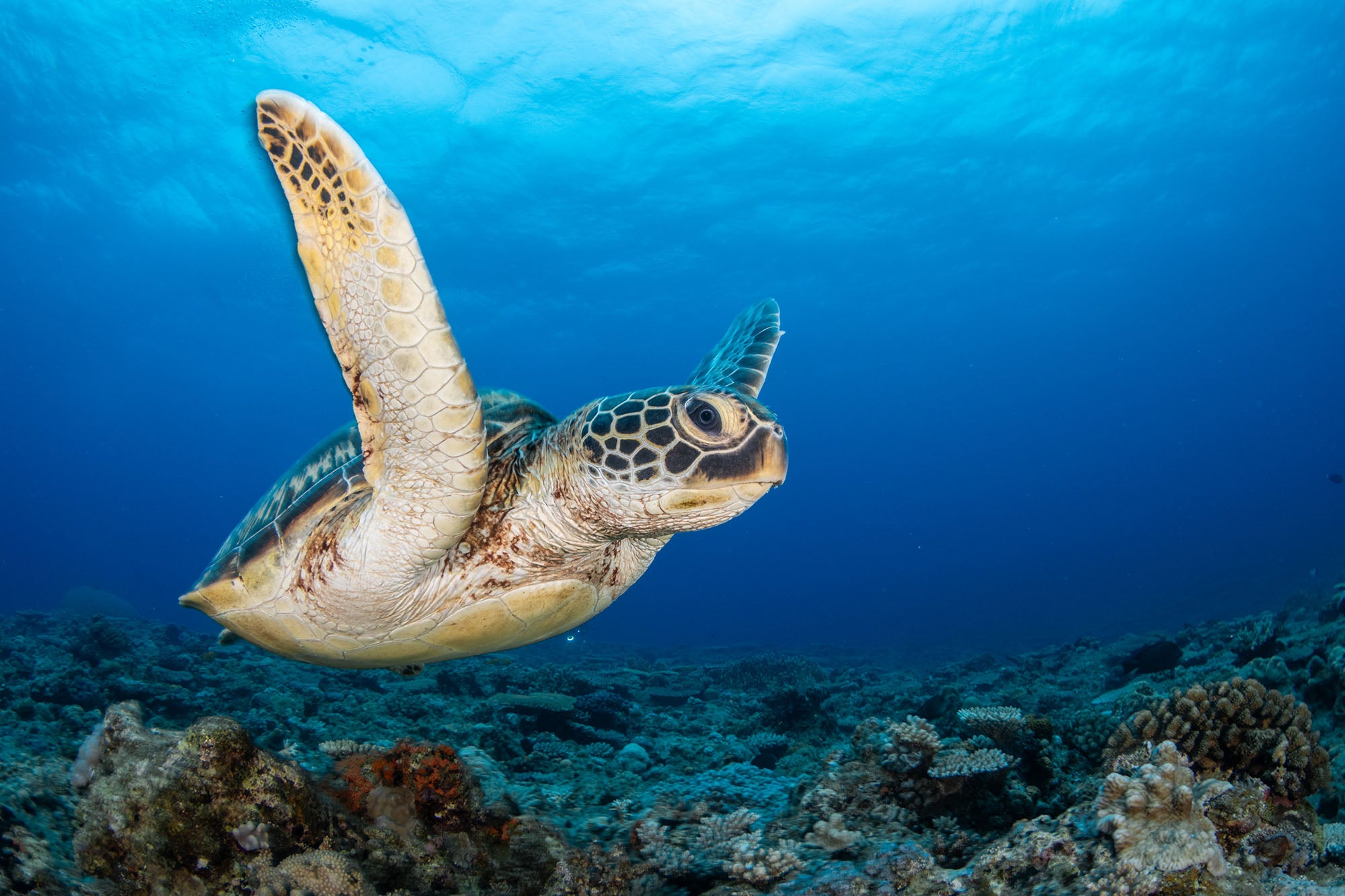By Logan Wood
One of the best parts about being a photographer and videographer is exploring new places and crafting a story around that experience based on my perspective and what I'm able to capture. So when I was given the chance to dive in South Africa, the answer was simple. This was going to be a chance to dive in new conditions, film new subjects, and most importantly, be witness to the South African Sardine Run. It was a story that I couldn't pass up on. So here's what went down on Ikelite’s latest expedition to South Africa.
Traveling to South Africa
To get to South Africa from where I am in the States, it's a bit of a hike. I took three planes in total, a little over 30 hours of travel time. And when I turned on my phone, I saw the worst notification that a photographer can see: my camera gear was never on the plane. But you don't make a trip like this without a Plan B. Thankfully, I had a full DLM system in my carry-on minus the handles.
Diving the Two Oceans Aquarium
The next day was an off day, so I had time to dive in the Two Oceans Aquarium and I just jumped in and palmed the housing. I definitely prefer to dive with handles on my system, it's a lot easier. But the DLM system was small enough to palm and it worked out fine.
Now, it's not the most thrilling dive, and I definitely didn't expect my first time in the water to be in an aquarium tank, but it was kind of interesting since this tank was filled with animals that were being rehabbed for various problems that they had. It's fun to try and figure out what was wrong with each of them as they swam by, some being a lot more obvious than others.
When I got out of the water I checked my phone and to my surprise my camera gear had made it from London to Cape Town the very next day. So it was back to my room to assemble the gear for the rest of the week.

Photo Gear
My main camera for filming and photographing underwater was the Sony a1 inside an Ikelite Underwater Housing. For lenses, I brought the Sony 12-24mm for super wide angle and the Sony 16-35mm f/2.8 for everything else.
Kelp Forest
The first dive day started out with a little bit of rain, but after traveling halfway across the world and waiting a whole day to get in the water, it was hard to keep spirits down. We were all stoked to just cruise up the coast in search of our first spot.
What's cool about Jacques’ trip is that you really just boat out, see something cool, and decide to dive. We do have some spots in mind, but it's really up to the group on what we see and what we want to do. So the first thing that caught our eye was a group of seals, and they were conveniently next to a kelp forest.
The plan was to explore the kelp free diving for a little bit and then hop on scuba and explore some of the corals underneath the seals in hopes that they'd come down and check us out.

The kelp in Cape Town is impressive, and that might be a little bit of an understatement. There are these wide sunlit paths, and then there are these dark, narrow corridors that you can explore and it's really easy to see why this is home to so much life. © 2024 Logan Wood
Like I mentioned, I was free diving here, but I also got to explore it on scuba. A lot of people choose to free dive in the kelp for a little bit more flexibility but I actually preferred it on scuba since it allowed me to slow down a little bit and get some of the shots that I had in mind.
After exploring the kelp for a little bit, we hopped on scuba and checked out the rock underneath the seals.

This was the first seal pup that I got to see. And after a few moments of him checking me out to see if I was cool or not, he came out to play. © 2024 Logan Wood
Once [the seal] realized that I couldn't keep up, he went off. So we explored around the reef a little bit more before calling it, heading back to the boat, and boating back to shore.
That night was spent kind of like every night just offloading footage, grabbing some food, making sure gear is all ready, because the next day we were heading past Cape Point and out into the deep to look for sharks.

Searching for Sharks
It took a few hours to boat out to where it was deep enough to look for the sharks. We ended up just kind of staring out into the blue for really any sign of life and as time went on, we started to lose hope for the sharks and spent most of our time photographing birds that were attracted to our sardines.
Eventually we saw something barely through the water. You could see this tiny, tiny, juvenile blue shark. When you're out there for hours and hours just hoping to see something and you finally do, you just get in the water. We hopped in the water and like I said, this thing was tiny, but I was able to track him as he did circles around the boat.

I had one small encounter with the blue that I'm really happy with. And then he just disappeared back into the blue. © 2024 Logan Wood
After that, we weren't really hopeful that we were going to see any more sharks, so he packed it up and headed back to shore.
Shysharks & Short-Tailed Stingray
Thankfully, we had just enough time to hit another sunny kelp forest with incredible visibility. We suited up, jumped in, and this is where I got into the thick of it.
I wanted to find more light in the shallows, so I diverted from the lighter paths in favor of the shallows where all of these cool sun rays were breaking through the kelp. Now, it gets thick here fast and the ocean's pushing me in and pulling me out. I had to time it perfectly to shoot through narrow openings to find my way through.
My camera quickly became an afterthought as I pulled myself through the kelp, eventually getting spit out into an opening that was big enough to rest.
Then the group spent the rest of our air on a patch surrounded by shysharks and a short-tailed stingray.
Sea Lions & Corals
While the kelp offers the opportunity to see really anything - there's so much life that lives there - I couldn't stop thinking about the seals. I had that one shot with the seal pup and a few other shots while freediving, but I really wasn't happy with it.
When asked what to do next, we decided to go back to the seals. When we jumped in immediately two seals came down to check us out. They hung around for like 10 to 15 minutes, just spinning and checking us out. It was enough time to get some shots and I was really happy with.
This was also the day that I was shooting the a7C II in the smaller Ikelite 200DLM housing and was the defining moment when I realized that this thing could actually hold up.
It was just such an amazing dive. Those seals led me all around this dive site where I got to see so many beautiful cold water corals and even a pajama shark.
After the dive, we headed back into shore because we had one more animal to check out.

African Penguins
Alright, so these are African Penguins and they're the only penguin species in Africa. They showed up in the early eighties and they've just been shown on Boulders Beach ever since. Today, there are protected species and a major tourist attraction in Cape Town. They were a little shy of my camera in the water, but thankfully I was there during peak breeding season and got to see tons of tiny chicks in the bushes.

A huge shout out to Oceans Around Us for operating this trip. And if you're ready to take on South Africa and experience all of this for yourself, you can learn more about it on their website www.oceansaroundus.com
Additional Viewing
Photographing Dolphins on a Sardine Run with Jacques de Vos [VIDEO]
Freediving with Orcas // Following a Dream To Norway [VIDEO]
My Arctic Ikelite System // Jacques de Vos' Underwater Housing Gear [VIDEO]
Norway Expedition Gear Packing // Underwater & Topside Camera Rigs [VIDEO]
Shooting a Surf Documentary in the Great Lakes with Matt Wagner [VIDEO]

Logan Wood is a published photographer, cinematographer, and Producer at Ikelite. Stemming from a great appreciation for the outdoors and living an active lifestyle, his work focuses on capturing and sharing the natural world through the latest technologies. When not in the studio, Logan can be found cruising on his bike, going to concerts, and researching where to go next. You can see more of his work at loganwood.net and on Instagram @jlowood
Ambassador Jacques de Vos started out shooting photos and video underwater on his days off as an engineer in the oilfield services. After progressing through scuba instructor and commercial diver certifications, he took up free diving. Before long, Jacques gave up both engineering and compressed air to become a full time photographer, videographer, and free diving instructor. Completely self-taught, Jacques has won several prestigious international UW photography awards; his photography has been published worldwide in several books and publications, and he now also works as a camera operator on projects for companies like the BBC and Red Bull. Jacques now spends several months a year free diving with Orcas in Norway and travels the world the rest of the time. Read more...
 Oceans Around Us was founded by Jacques de Vos and is an organization that focuses ethical underwater expeditions, research and conservation, and underwater photography and videography. Learn more...
Oceans Around Us was founded by Jacques de Vos and is an organization that focuses ethical underwater expeditions, research and conservation, and underwater photography and videography. Learn more...











![Diving the Cape Peninsula // South Africa Underwater [VIDEO]](http://www.ikelite.com/cdn/shop/articles/South_Africa_Stories_from_the_Field_copy.jpg?v=1723140916&width=1500)


![Chasing the Sardine Run Underwater in South Africa [VIDEO]](http://www.ikelite.com/cdn/shop/articles/Sardine_Run_Expedition_South_Africa_copy.jpg?v=1725375302&width=2000)